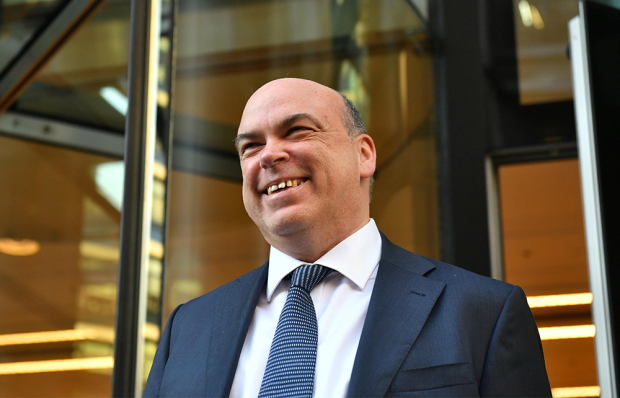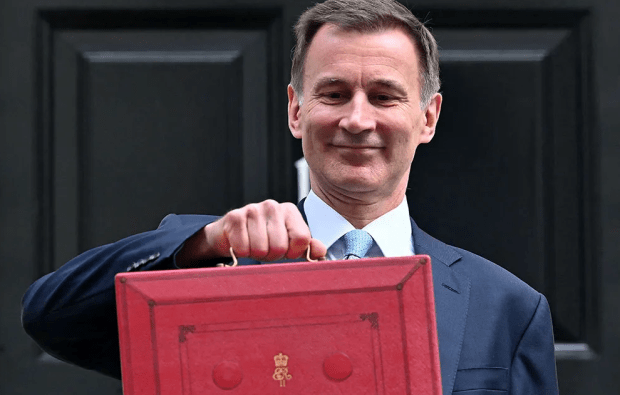‘We’re going to have not just consumers represented on company boards, but workers as well,’ Theresa May declared in July. ‘I can categorically tell you that this is not about… the direct appointment of workers or trade union representatives on boards,’ she corrected herself in her CBI speech last month. ‘It will be a question of finding the model that works.’ But is there such a thing?
The case was set out in a recent TUC paper, All Aboard, which argues that worker participation would encourage ‘a long-term approach to decision-making’ and ‘help challenge groupthink’. Support is claimed from the Bank of England’s Andy Haldane: ‘If power resides in the hands of one set of stakeholders, and they are short-termist, then we might expect high distribution of profits to this cohort, at the expense of ploughing back these profits [as increased investment] or distributing them to workers [as increased real wages].’
Examples are quoted of FirstGroup, the transport operator that has train driver Mick Barker as an employee director, and of worker reps’ successes on European boards in defeating merger and outsourcing proposals, and ‘the rejection of plans for a new office block’. A table showing that countries with ‘stronger participation rights’ spend more on R&D and have lower poverty rates is followed by a health warning: ‘Correlations do not in themselves prove causality.’
Quite so — and in the broader quest for better corporate citizenship, isn’t this debate just a big old red herring with a whiff of the 1970s? In today’s world, the shopfloor wage-earner is likely to be just as short-termist as the chief executive: neither expects to stay more than a few years, both put a priority on self-interest. But the codified duty of directors is to act in the best interests of a company and its shareholders while taking due account of the interests of its employers, suppliers, customers and community. If carried through in good faith, that definition is already sufficient; muddying it with workers’ reps would only lead to conflict, stalemate and inefficiency. Having raised the issue, Mrs May can now negotiate it away against her demand for greater transparency and fairness in executive pay — which is a far more worthwhile objective.
Clubland sting
This column is never slow to claim credit, and I’d like to think my campaign on the unfair burden of business rates helped provoke the south-to-north and urban-to-rural tilt of the current review. The Autumn Statement increase in rural rate relief to 100 per cent, offering small businesses a tax break of £2,900 a year, has almost made me a local hero in Yorkshire. But, as Philip Hammond is now discovering, redistributional policy shifts have unintended consequences.
The review’s headline was that struggling northern firms would benefit, in effect, from rates increases of up to 80 per cent on high-margined West End retailers such as Polo Ralph Lauren and Selfridges — which would pass the cost to foreign shoppers enjoying the bonus of the devalued pound. But one London bookseller points out that an unlucky stratum of smaller businesses with relatively valuable premises in the capital will see their entire profits wiped out by the rates rise — ‘which makes a nonsense of boasting about slashing corporation tax to 17 per cent,’ he adds ruefully.
Worse still is the impact on London’s clubland, that oasis of civility, sound opinions and establishment networks. Clubs with bedrooms have been told they were undervalued last time round, in 2010, and have now been revalued akin to three-star hotels, resulting in rates increases of 60 per cent or more for 2017/18. For the likes of the Reform in Pall Mall or the East India in St James’s Square, that’s a hit of around £100,000 each.
You can’t make an omelette without breaking eggs, the Chancellor might say, but unless he wants to be cursed and cold-shouldered by influential clubmen for the rest of his tenure, he’d be wise to come up with a special dispensation.
Forty years on
Apologies for all the numbers in this item, but bear with me: it casts a curious sidelight on the long-term spiral of London house prices and executive pay. Browsing a glossy property website — as you do — I came across pictures of a top-floor flat in Rutland Gate, SW7, that was my parents’ home in the mid-1970s. Labelled ‘Knightsbridge penthouse’, it was on offer for £3.5 million. And I was instantly reminded of the only time I ever heard my late father use an obscenity.
It must have been early 1976 when he muttered ‘We’ve got to sell this fucking flat’ — because its rising service charges in a time of double-digit inflation and zero salary rises had made him overdrawn at the bank, which was no laughing matter since he was a senior executive and lifelong employee of the bank in question, Barclays. In a stagnant market he eventually sold for £42,000; I also recall his relief when the Singaporean buyer arrived with a briefcase of cash. Using the Bank of England’s inflation calculator, that sale price would be just £273,000 today.
My father’s annual salary then might have been £60,000 but at a marginal 83 per cent tax rate it was less than £16,000 net: say £100,000 today. His nearest Barclays equivalent nowadays is paid £2.5 million gross, which is £1.3 million net if it’s taxed onshore. In real terms, then, central London homes and net City pay have both inflated 13 times over four decades.
So what, you ask: both reflect global market scarcities —of top talent and prime bricks-and-mortar. But surely neither the talent nor the real estate has become so rare as to justify such extreme rises in relative value, and you can’t avoid the simple conclusion that if bankers’ salaries had not soared of their own volition, to so little evident economic benefit to anyone else, London flats — even Knightsbridge penthouses — would be a lot more affordable today. Just a thought.
Got something to add? Join the discussion and comment below.
Get 10 issues for just $10
Subscribe to The Spectator Australia today for the next 10 magazine issues, plus full online access, for just $10.















Comments
Don't miss out
Join the conversation with other Spectator Australia readers. Subscribe to leave a comment.
SUBSCRIBEAlready a subscriber? Log in